
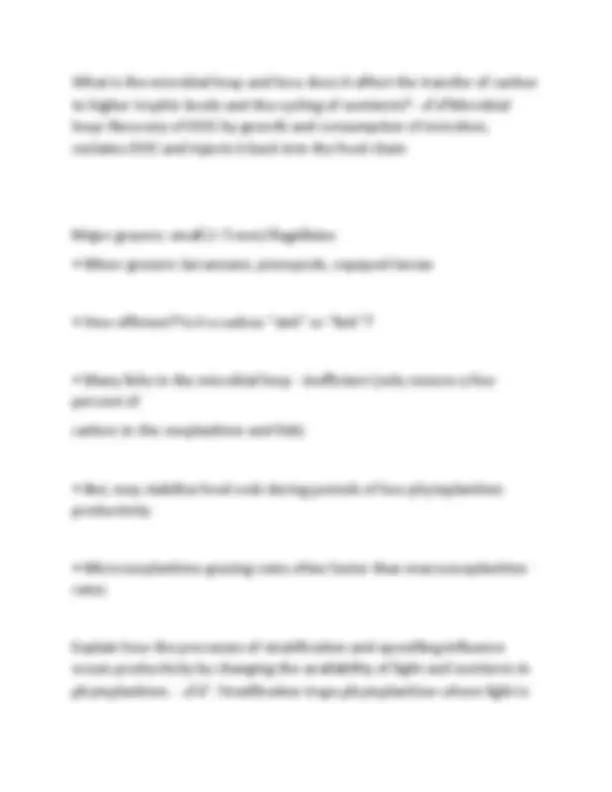
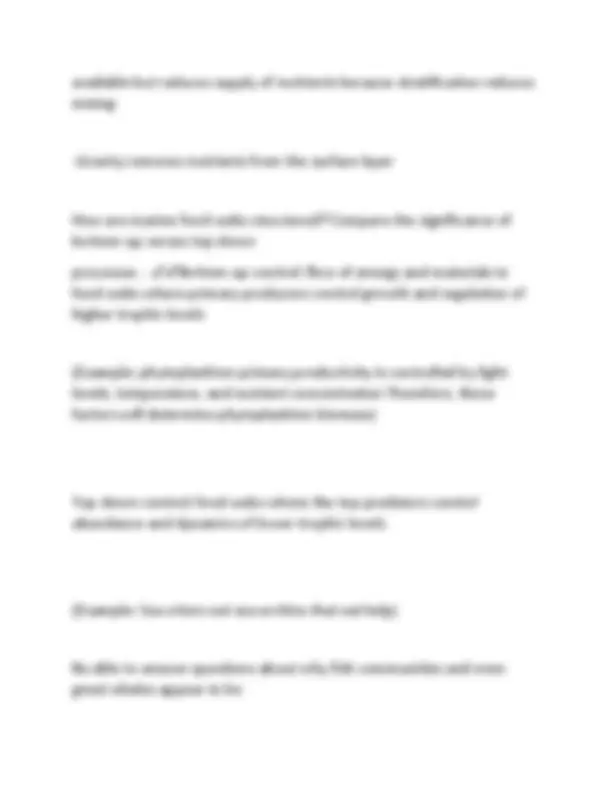

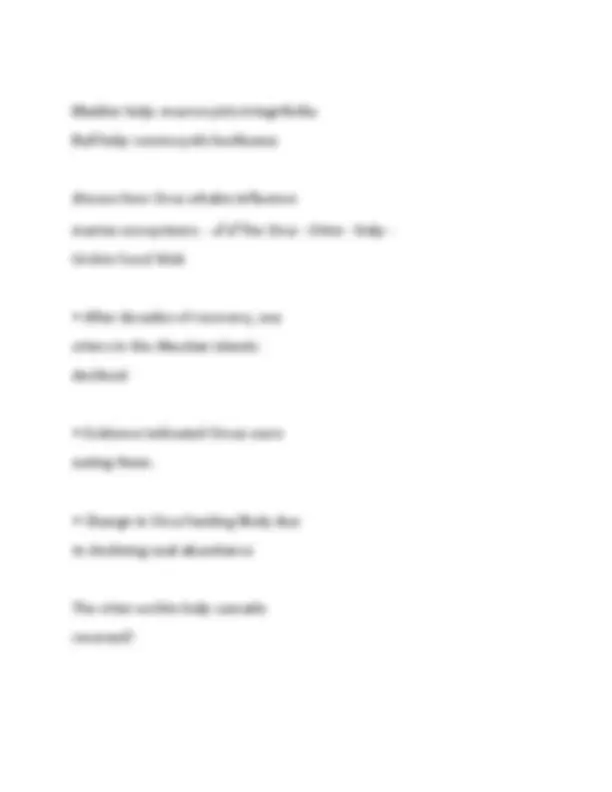
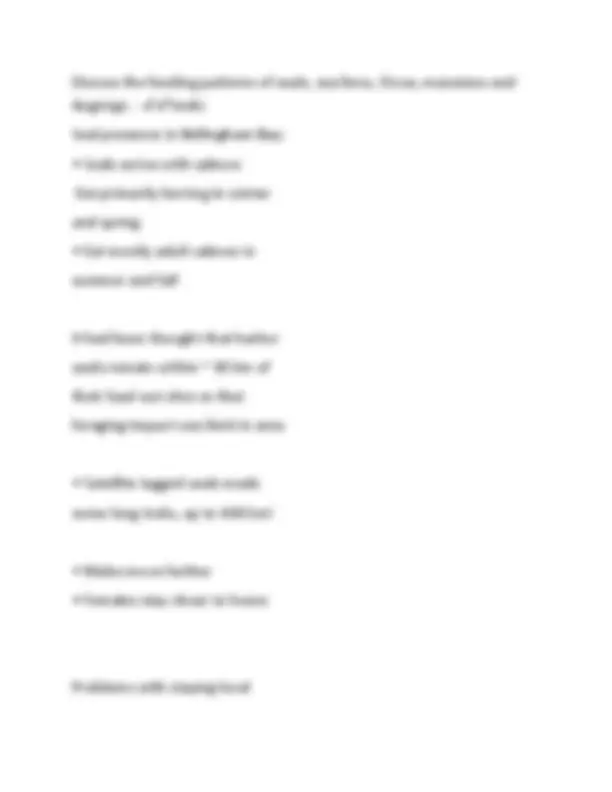
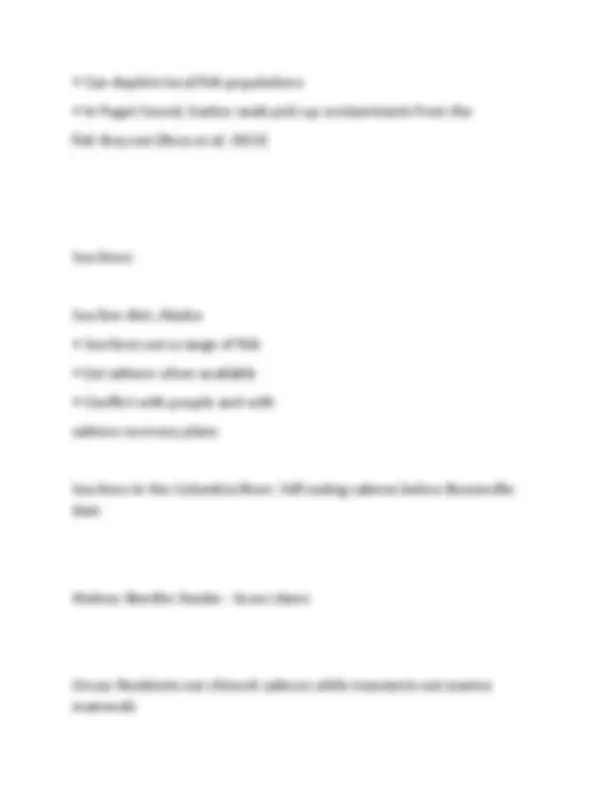
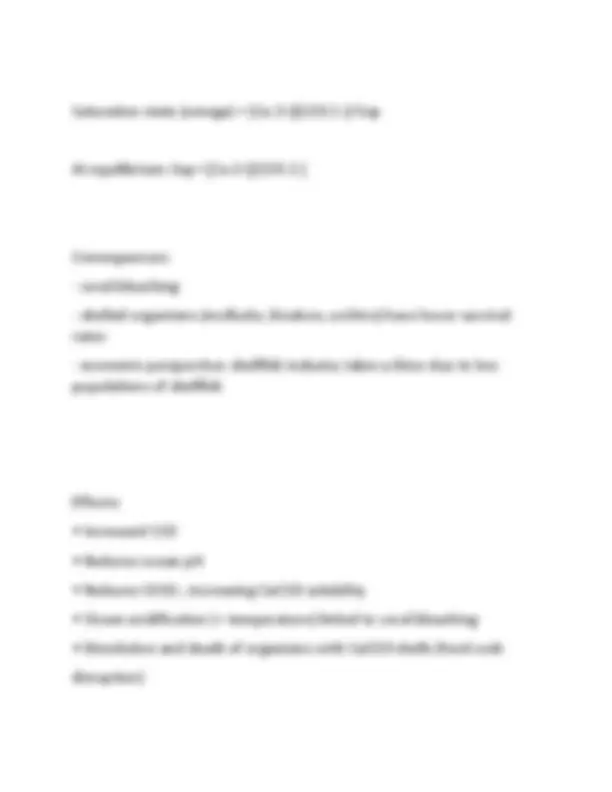


Study with the several resources on Docsity

Earn points by helping other students or get them with a premium plan


Prepare for your exams
Study with the several resources on Docsity

Earn points to download
Earn points by helping other students or get them with a premium plan
Community
Ask the community for help and clear up your study doubts
Discover the best universities in your country according to Docsity users
Free resources
Download our free guides on studying techniques, anxiety management strategies, and thesis advice from Docsity tutors
A comprehensive set of questions and answers covering key concepts in marine ecology, including zooplankton migration, benthic zonation, whale falls, deep-sea diversity, microbial loop, ocean productivity, food web dynamics, and the impact of global warming and ocean acidification on marine ecosystems. It is a valuable resource for students studying marine biology, oceanography, or related fields.
Typology: Exams
1 / 13

This page cannot be seen from the preview
Don't miss anything!








Why do zooplankton perform diel vertical migration? What are the implications of this migration on nutrient and carbon transport in the open ocean? - ✔✔Cue: Light levels
*Draw triangle diagram How might whale falls serve as stepping stones for the dispersal of hydrothermal vent organism larvae? - ✔✔chemosynthetic bacteria start at hydrothermal vents in the tube worms then they disperse and skip across whale skeletons until they find the next vent Why else are whale carcasses important to the deep sea? - ✔✔they serve as nutrients and food sources for life in the deep sea chemosynthetic bacteria, osedax, hagfish, sleeper sharks, etc. Why is deep‐sea benthic species diversity so high? - ✔✔Silt diversity What roles to microbes and viruses play in marine ecosystems? - ✔✔Viruses - Release nutrients from prey via cell lysis
available but reduces supply of nutrients because stratification reduces mixing
structured from the bottom up. - ✔✔Spatial variation in fish yield correlates with phytoplankton biomass Temporal variation in climate (NAO) correlates with fish yield Areas of low productivity will be more susceptible to changes in fish abundance More chlorophyll measured= more fish abundance Great whales mostly eat zooplankton which eat phytoplankton discuss the extent to which top predatory fish can exert top‐down control on marine food webs. - ✔✔A: Adding fish reduces zooplankton, but not phytoplankton
discuss how sea otters and Orca whales influence marine ecosystems. - ✔✔- Sea otters eat crab
Bladder kelp: macrocystis integrifoilia Bull kelp: nereocystis luetkeana discuss how Orca whales influence marine ecosystems. - ✔✔The Orca - Otter - Kelp - Urchin Food Web
Manatees & dugongs: Eat seagrass (and sometimes associated invertebrates)
Saturation state (omega) = [Ca 2+][CO3 2-]/ ksp At equilibrium: ksp= [Ca 2+][CO3 2-] Consequences: